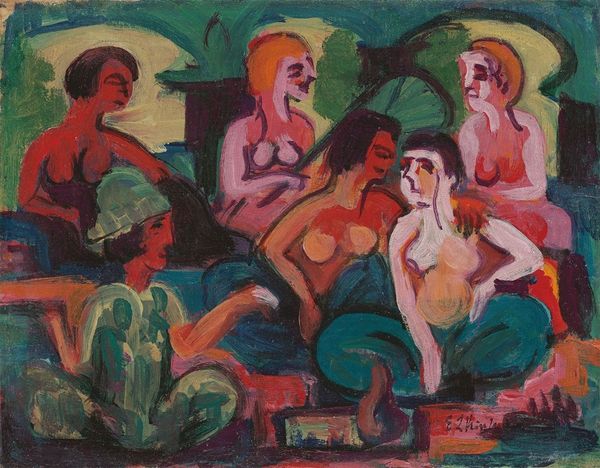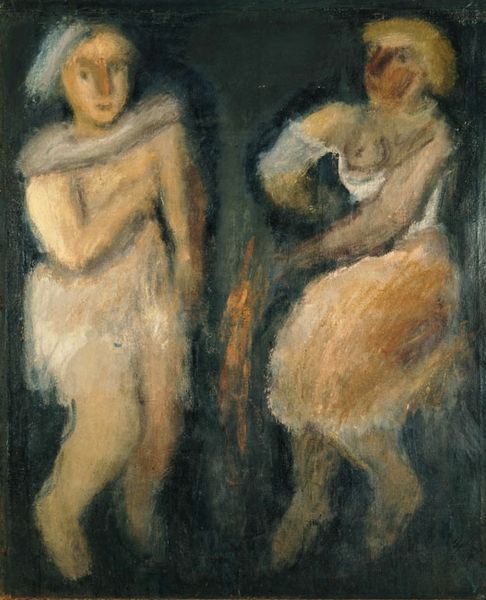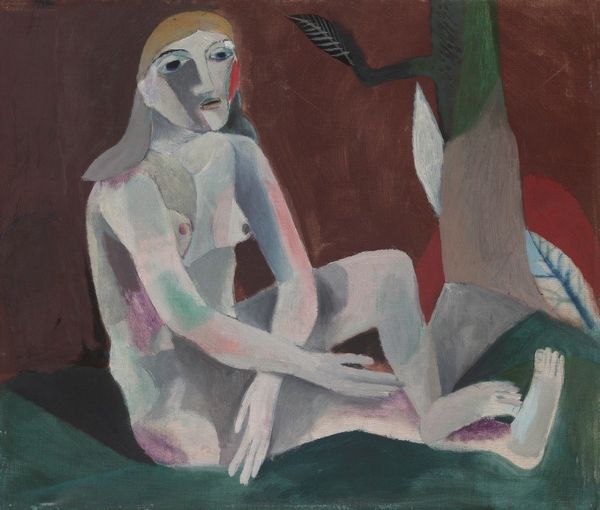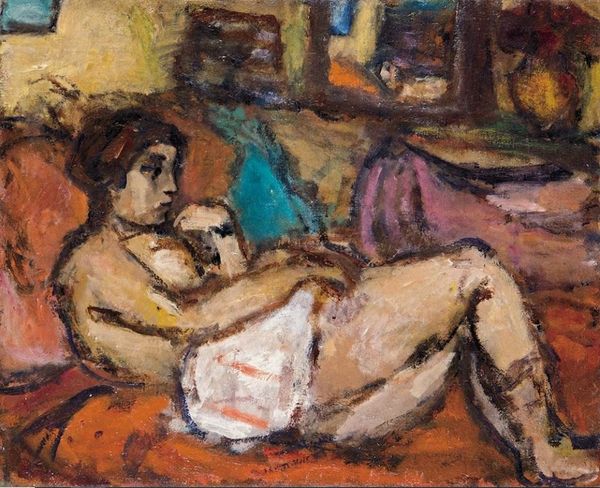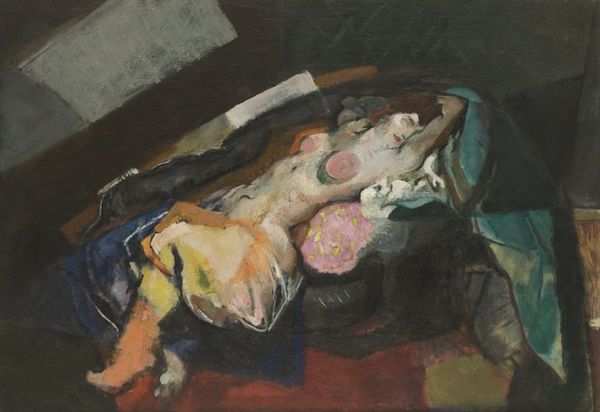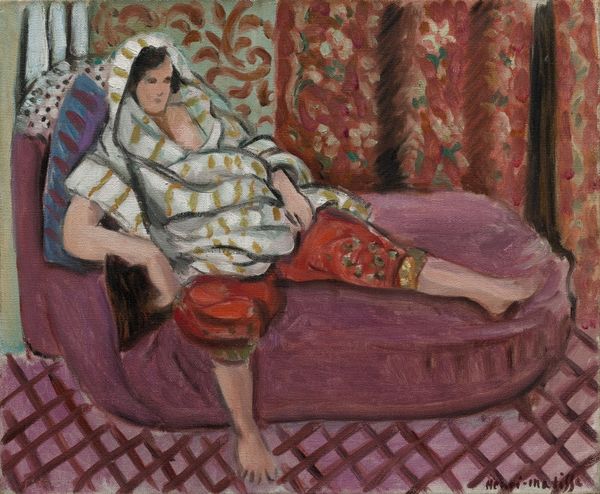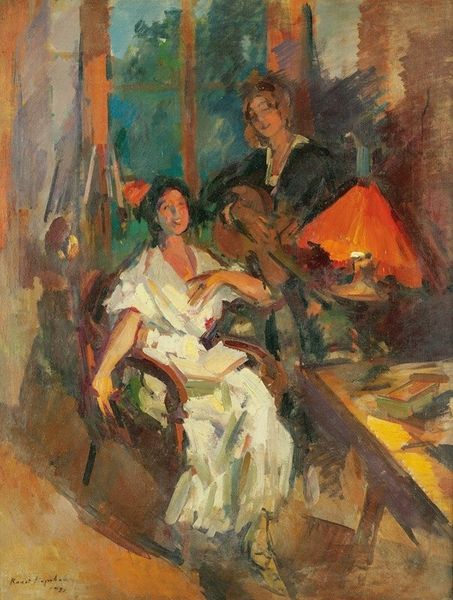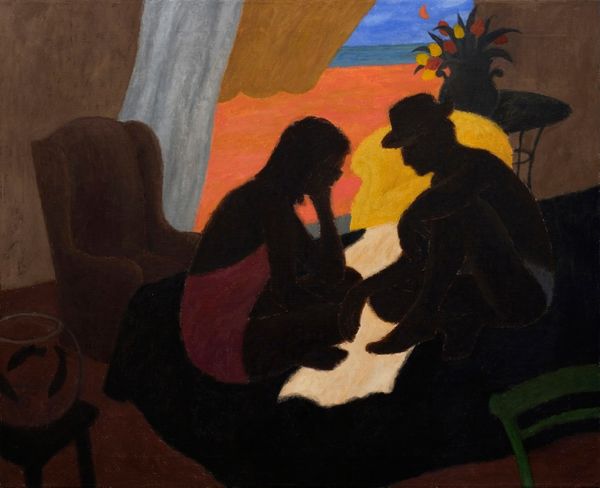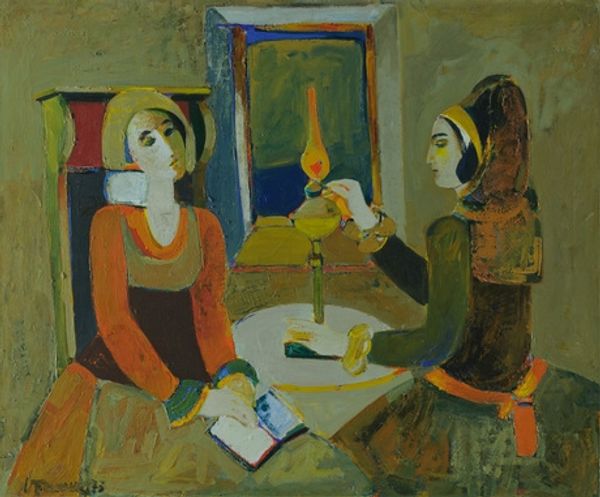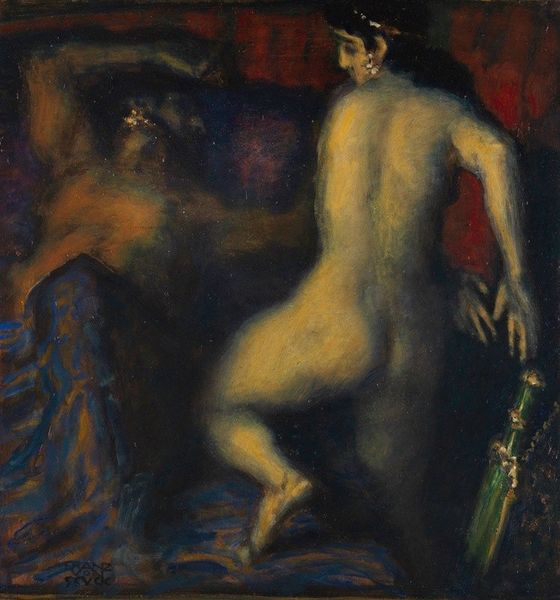
Copyright: Iosif Iser,Fair Use
Editor: We’re looking at Iosif Iser’s “Tatar Interior,” an oil on canvas from 1933. The muted palette and enclosed space create an intimate, almost claustrophobic feeling. What do you see in this piece that might go beyond a simple domestic scene? Curator: Iser, a Romanian-Jewish artist, painted this during a period of rising nationalism and antisemitism in Europe. "Tatar Interior" presents an Orientalist trope, but one that potentially subverts it. We should ask, who is allowed to represent whom, and to what end? Is Iser making a comment on cultural appropriation, or is he simply participating in it? Editor: That's a fascinating point. I hadn’t considered the sociopolitical context influencing his artistic choices. Curator: Consider the figures themselves. One reclines, seemingly passive, while the other is actively engaged with something in her hands. This can reflect or perhaps critique, the varying positions of agency within this constructed 'exotic' space. Does the title then become ironic, a commentary on how identities are performed or consumed? Editor: So, instead of merely depicting a scene, Iser may be interrogating the very act of representation, particularly through the lens of cultural power dynamics. Curator: Precisely. What questions does that provoke for us today? Editor: I see it now, the piece invites us to reflect on the ethics of looking, and how art can both reinforce and challenge cultural stereotypes. Curator: Indeed. It reminds us that art is not created in a vacuum. Editor: I’ll definitely look at Orientalist paintings differently from now on! Curator: Hopefully, you now recognize how considering these layered historical and social contexts can provide a richer, more nuanced understanding of the artwork.
Comments
No comments
Be the first to comment and join the conversation on the ultimate creative platform.
